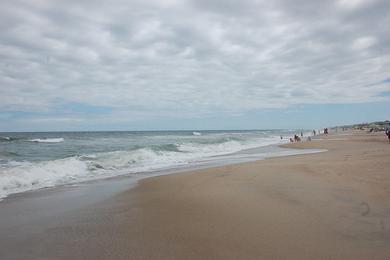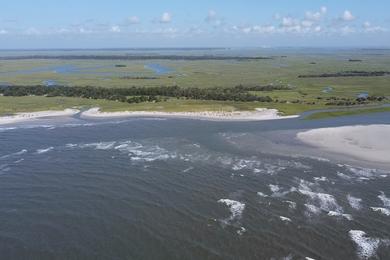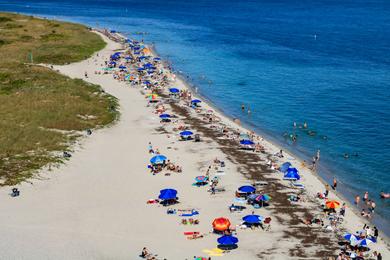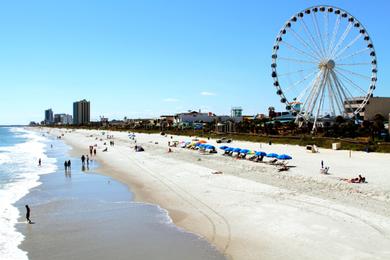Overview
Sand sharks (Carcharias taurus) belong to the Odontaspididae family. They have a stocky, robust build with a blunt, rounded snout. Their coloration is typically gray to brown, often with darker blotches or spots. They are distinguished from other similar species, such as the bull shark, by their longer, more pointed pectoral fins and their lack of a prominent interdorsal ridge.
Commonly found in:
- Mexico
- Brazil
- Japan
- China
- India
- Thailand
- Vietnam
- Malaysia
Over the past 74 years, there have been 18 recorded attacks by sand sharks. Of these attacks, they have occurred at sea and at the following beaches:
Size and Weight
- Size: Males average between 6.5-8.2 feet when mature
- Size: Females average between 7.2-9.8 feet when mature
- Weight: Males typically weigh 150-200 pounds
- Weight: Females typically weigh 200-250 pounds
- Swimming speed: Both sexes swim at speeds of 2-3 mph
Interaction with Humans
- Interaction with Humans: Generally non-aggressive, rarely involved in attacks
- Avoidance: Stay out of shallow coastal waters during their active hours
- Activity: Most active at night and during dawn and dusk
Lifespan and Diet
- Lifespan: Males live approximately 20-25 years; females live approximately 25-30 years
- Diet: Primarily small fish, crustaceans, and squid; hunts by swimming slowly near the bottom and snapping up prey
Migratory Patterns
Sand sharks, also known as sand tiger sharks or ragged-tooth sharks, exhibit seasonal migration patterns. They typically move northward along the coast during spring and summer, and southward during fall and winter. In the western Atlantic, they migrate from the waters off New England and the Mid-Atlantic states to the Carolinas, Florida, and the Gulf of Mexico. In the eastern Pacific, they move between California and Mexico. In Australia, they migrate along the eastern and southern coasts, ranging from Queensland to South Australia.









